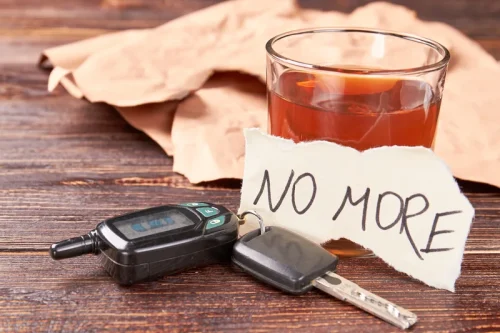
Once individuals realize just how conflicting their beliefs are, they work hard to relieve the discomfort in an attempt to resolve Dissonance – this is titled “The Principle of Cognitive Consistency”. Sometimes, new information leads to cognitive dissonance, but that also allows you to take new actions you may not have thought about taking before. It can also further strain your relationships with others, especially if you’re having cognitive dissonance related to what someone else is saying or doing. Cognitive dissonance can feel a lot like anxiety and stress — and they often come paired together. When you’re stressed or anxious, you could affect your overall mental, emotional and physical health. But you can feel caught off guard when those values and beliefs are shaken by social pressures, the presence of new information or having to make a rushed last-minute decision.
Challenge your beliefs
In another study, the odds of having attention deficit hyperactivity disorder (ADHD) were more than three times as great for adolescents whose mothers smoked during pregnancy compared with children of nonsmoking mothers (Pauly and Slotkin, 2008). These same regions underlie declarative memory—the memories that define an individual, without which it would be difficult to generate and maintain a concept of self (Cahill and McGaugh, 1998; Eichenbaum, 2000; Kelley, 2004; Setlow, 1997). Drugs’ capacity to act upon the substrates of declarative memory suggests that their impact on cognition is potentially extremely far-reaching. Alternatively, they may reduce cognitive dissonance by being mindful of their values and pursuing opportunities to live those values. Cognitive dissonance occurs when a person’s behavior and beliefs do not complement each other or when they hold two contradictory beliefs.
Download 3 Free Positive CBT Tools Pack (PDF)
For instance, they may justify their sedentary behavior by saying that their other healthy behaviors—like eating sensibly and occasionally exercising—make up for their largely sedentary lifestyle. When there are conflicts between cognitions (thoughts, beliefs, and opinions), people will take steps to reduce the dissonance and feelings of discomfort. Because people want to avoid discomfort, cognitive dissonance can have a wide range of effects.
- Bandura [45] first introduced the concept of self-efficacy and defined it as “people’s beliefs about their capabilities to produce designated levels of performance that exercise control over events that affect their lives”.
- Previous studies mainly centered on the discontinuous usage intention of social media users, and achieved many research results, mainly focusing on the following five aspects.
- Whether it is through platform or government regulation, users ultimately play an important role, and if users can consciously improve their own qualities, user management will be more effective with less effort.
- The technique involves exposure to a hierarchy of cues, which signal craving and subsequently substance use.
Research Hypotheses and Model
- These are presented repeatedly without the previously learned pattern of drinking so as to lead to extinction.
- This distortion is usually accompanied by a belief that our happiness and success rests on other people, leading us to believe that forcing those around us to change is the only way to get what we want.
- Training in assertiveness involves two steps, a minimal effective response and escalation.
- These science-based exercises will provide you with a detailed insight into Positive CBT and will give you additional tools to address cognitive distortions in your therapy or coaching.
- The anonymity and confidentiality of the study were also guaranteed, with no personal identifying information collected.
This episode of the podcast Behavioral Grooves features an interview with Dr. Kathleen Vohs on cognitive dissonance theory. Dr. Vohs discusses the topic as it relates to supporters of Former President Donald Trump justifying one of his controversial tweets in 2019. In romantic relationships, important values represent hotspots for cognitive dissonance and typically center on big decisions, such as the wish to have children, lifestyle https://ecosoberhouse.com/article/boredom-drinking-and-how-to-stop-it/ choices (e.g., buying a house vs. traveling the world), and issues related to family and friends. The theory is based on the idea that two cognitions can be relevant or irrelevant to each other (Festinger, 1957). Such cognitions can be about behaviors, perceptions, attitudes, emotions, and beliefs. If the cognitions are relevant, they can be in agreement (consistent) or disagreement (inconsistent) with one another (Festinger, 1957).
Conflict of interest statement
For example, the cognitive dissonance you might experience after choosing between two equally appealing options isn’t necessarily destructive unless you choose an option that will cause harm to yourself or someone else over an option that won’t. If both options are equally harmless, changing your beliefs to support the option you chose won’t have any long-term negative impacts. Angie has dedicated her life to freeing those suffering from drug and alcohol addiction. Her wealth of experience coupled with her natural talent for connecting with people and a deep desire to make a difference in the world has made Angie the leader she is today. His primary strengths include clinical insight into substance abuse/mental health, hard work ethic, and ability to work well under pressure.

That slight feeling of discomfort we perceive when noticing this mismatch is called cognitive dissonance. Cognitive dissonance plays a role in many value judgments, decisions, and evaluations. Becoming aware of how conflicting beliefs impact the decision-making process is a great way to improve your ability to make faster and more accurate choices.
Cognitive Distortions: 22 Examples & Worksheets (& PDF)

She has a strong work ethic and it’s not unusual for her to be up at the facility at 2am or on the phone all night helping guide our staff on how to best manage whatever situations come up. Mason Ungar is a Certified Alcohol Drug Counselor-Clinical Supervisor who manages the Elevate Addiction Services South Lake Tahoe facility. As a Regional Director, Mason is responsible for all aspects of the South Lake Tahoe facility, including staffing, finances, rehabilitation services, community activities, certification and licensing and facility maintenance.

2. Structural Equation Model
He connected these distorted thinking patterns with his patients’ symptoms and hypothesized that changing their thinking could change their symptoms. In addition to his prodigious catalog of publications, Beck founded the Beck Initiative to teach therapists how to conduct cognitive therapy with their patients–an endeavor that has helped cognitive therapy grow into the therapy cognitive dissonance and addiction juggernaut that it is today. As we delve into this concept, we find that aligning our beliefs and actions has a phenomenal effect. It’s like putting the pieces of a puzzle together and watching a transformation happen within us. This type of increase in delusional thinking often creates many challenges for those in addiction recovery, and those hoping to avoid relapse.

A person with cognitive dissonance experiences mental conflict and may take steps to try to resolve it. This could include changes in behavior or attempts to ignore information that contradicts a goal or desire. For example, a smoker might quit smoking or instead rationalize their behavior by saying other habits are just as dangerous.
